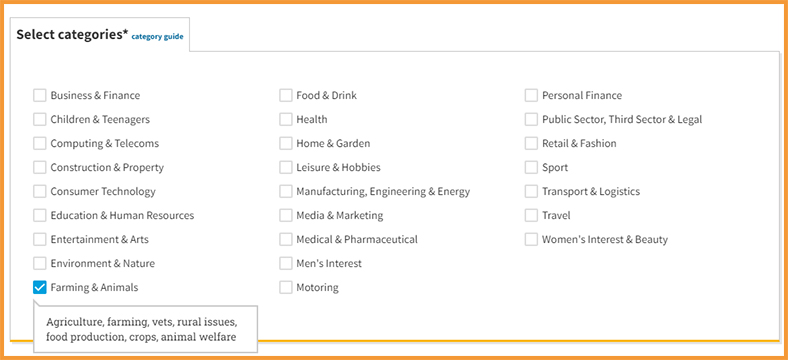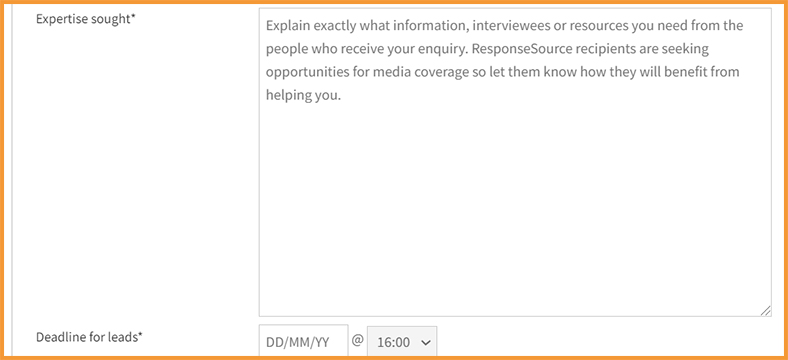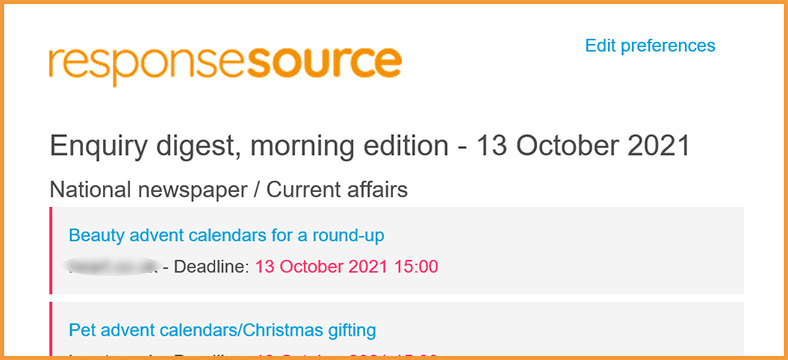6 reasons to use the Journalist Enquiry Service versus #JournoRequest

You’ve got a deadline coming up for an important feature and your usual resources for case studies, products for review, up-to-date research or spokespeople have let you down – where do you get what you need?
For UK journalists in particular, tweeting out an ask with the #JournoRequest hashtag is a popular and convenient choice, but there are plenty of pros to using the free-for-journalists ResponseSource Journalist Enquiry Service instead. Here are just a few of them…
1. You can target specific niches and sectors with your request
The #JournoRequest hashtag is watched by many PRs and marketers looking for opportunities to work with journalists, but it’s also open to everyone with a Twitter account. That’s a lot of people who don’t have what you need. The Journalist Enquiry Service allows for targeted requests to appropriate sectors and niches including Business & Finance, Home & Garden and Retail & Fashion, meaning the right people can see your request and offer you relevant material.

2. You can include all the detail you need
Being concise is good, but sometimes 140 characters just aren’t going to cut it. You might want to include previous pieces you’ve done to give an idea of style or format, explain a bit more about what your focus will be, even link to what has inspired the piece you’re working on. While you probably shouldn’t write a whole novel in there (and who has time for that when there are deadlines to work to), there is enough space to make clear exactly what you want from the UK PRs that use the Journalist Enquiry Service… as well as what you don’t.

3. Your requests are only shared with vetted users
Maybe you have a fresh take on something and would rather not broadcast your idea to others who might fancy writing about the same thing for a competitor outlet (not that anyone would do that), or even the outlet you’ve pitched your freelance piece to – the Journalist Enquiry Service is the perfect avenue. While the service is free and open for journalists to use, where the requests go is carefully vetted. Subscribers are PRs and comms professionals who are actively interested in providing help to the UK media (while gaining coverage in the media, of course) and requests go straight through to their inboxes.

4. You don’t have to share your contact details with request recipients until you’re ready
When to invite someone into your DMs and when to share your email address doesn’t even have to be a consideration when starting the dance between journalist-who-needs-thing and PR-who-might-have-thing. Once a journalist has sent their request via the Journalist Enquiry Service, contact between you and subscribers who reply with offers starts through our internal network. Email replies come via responsesource@responsesource.com, until you’re ready to share your own contact details.

5. You can set a firm deadline

If you still had space in your #JournoRequest tweet for a deadline for leads, or added it to the thread, it could still be missed by busy PRs. When it’s time to finish off and file your feature, you could go back and delete the tweet, or even tweet again with ‘Please don’t send me any more luxury cheese/knitting club launch invites/advice for new blue-tongued skink parents’ if the offers keep piling in. Alternatively, you can set a clear deadline on the Journalist Enquiry Service form that isn’t easily ignored or unnoticed. When your request is done, it falls off of the system and PRs can no longer reply (though, if you find you need more contributions, you can always use your request id to resend your original request without filling the form back in).

6. Journalist Enquiry Service users are useful to know
The Journalist Enquiry Service isn’t just used by agency and in-house public relations or comms people, as helpful as they are. Subscribers regularly using the service and responding to journalists looking for help also include charities, local councils, Government agencies, celebrity agents and academics. Many journalists who have sent a request via JES have built useful industry connections for finding future case studies and tips on upcoming trends in the sectors they cover through using the service. So instead of throwing your request for information for your next feature out into the wilderness of social media, target relevant sectors and professionals who have exactly what you’re looking for, whatever you’re working on next.
Ready to send your own request out to experts with info, review products and spokespeople perfect for your particular niche? Use the Journalist Enquiry Service to get what you need, straight to your inbox.
Want to know how to get the most out of the ResponseSource Journalist Enquiry Service? Here’s some tips on optimising your requests and advice on saving time to receive relevant contributions.